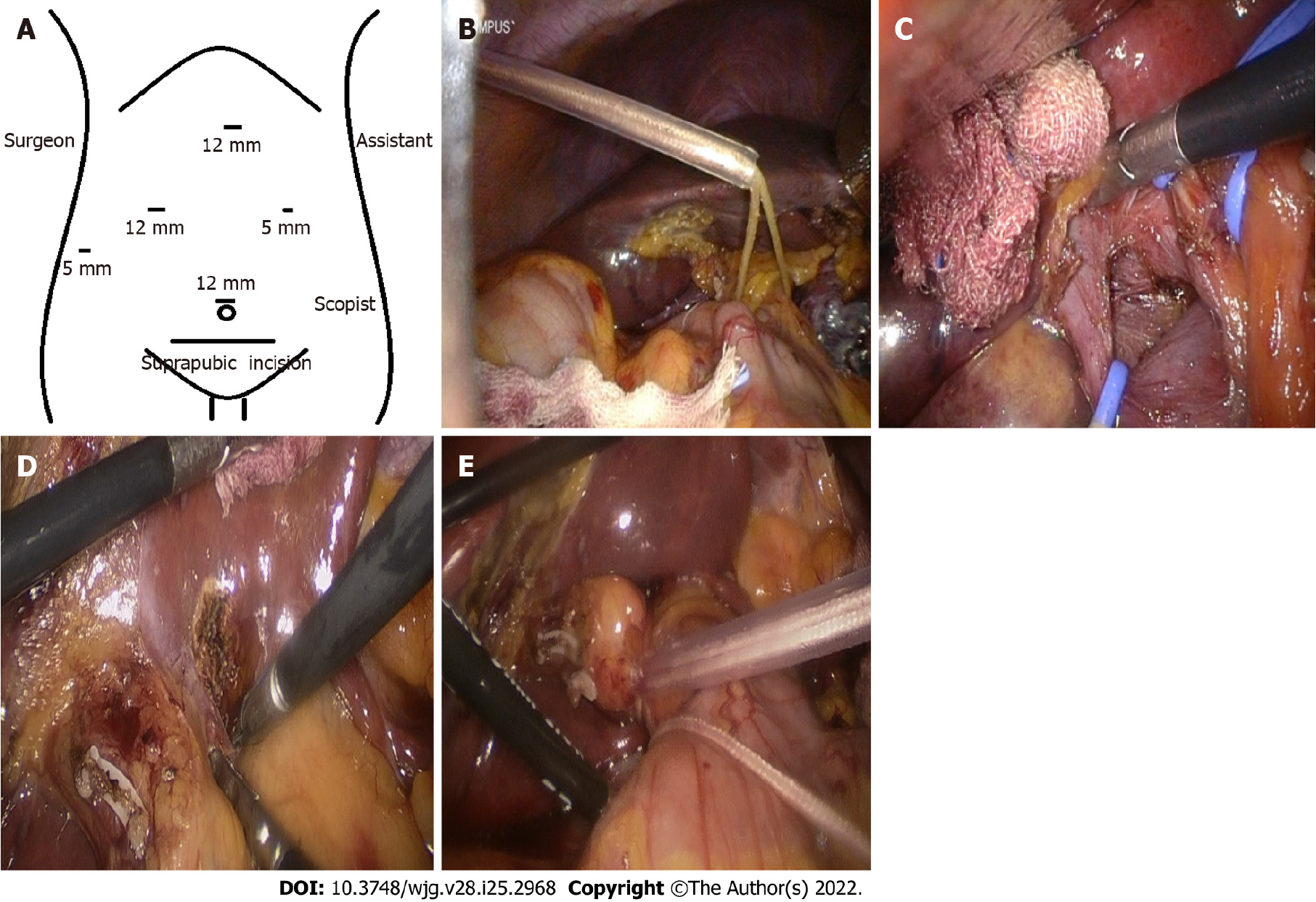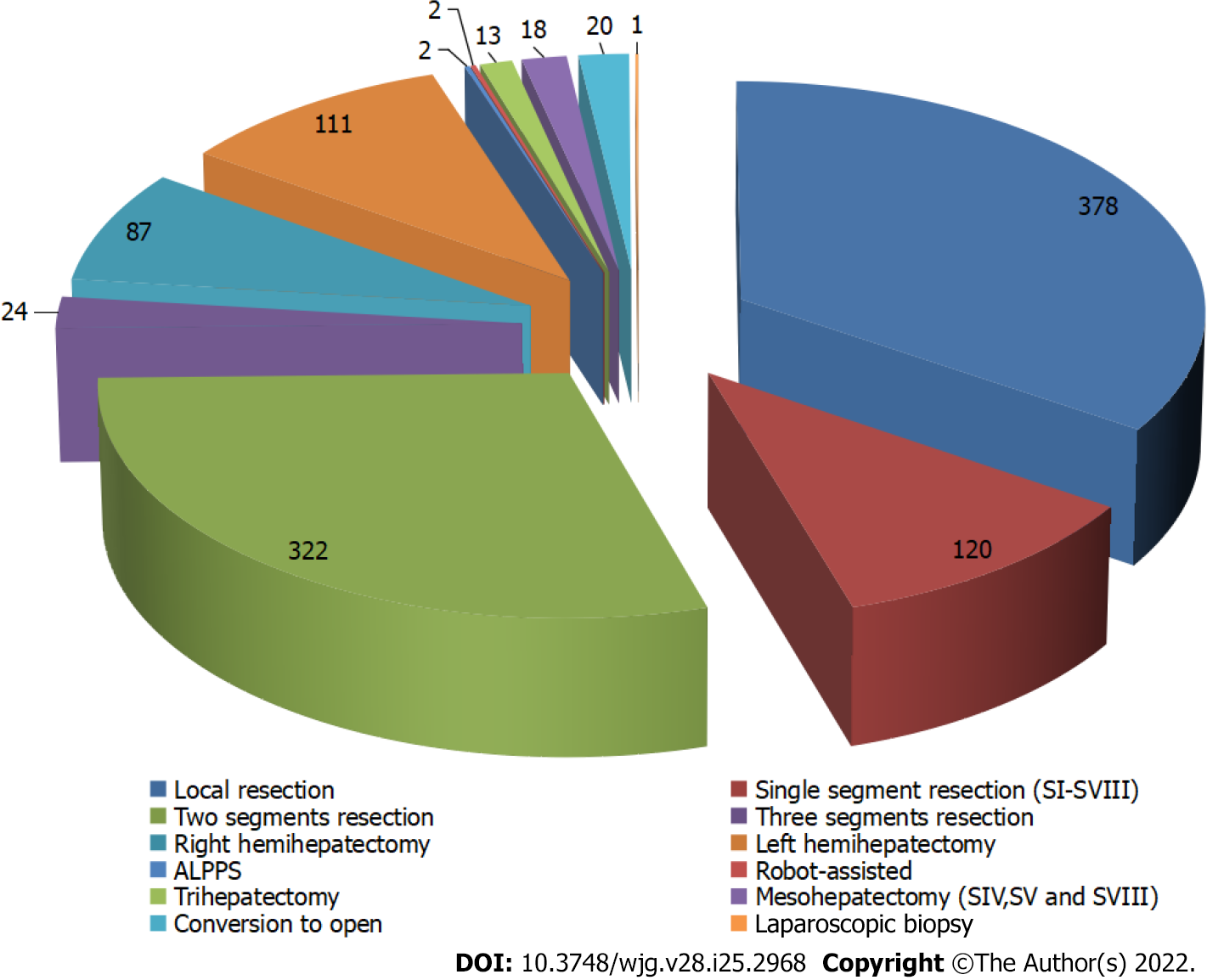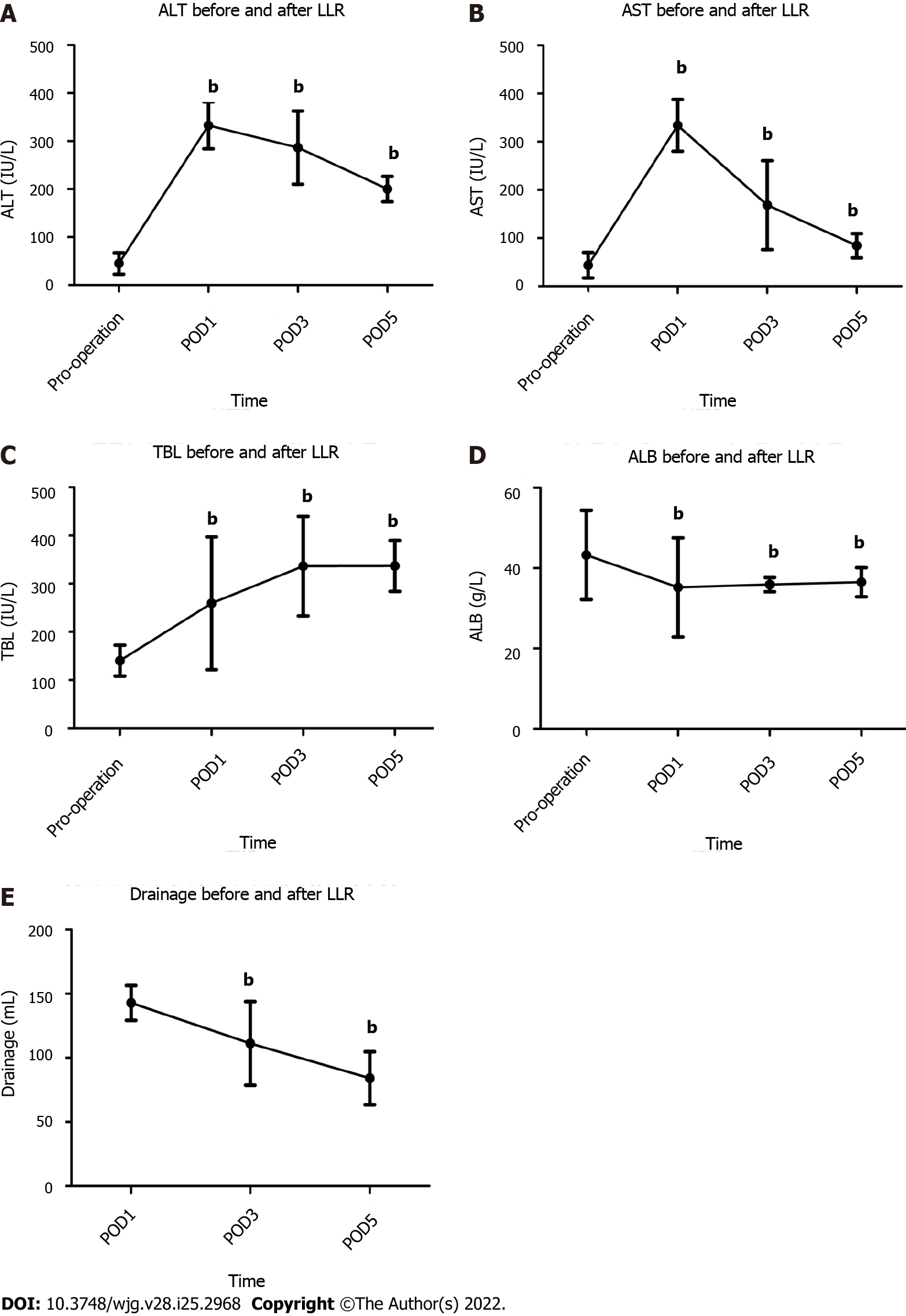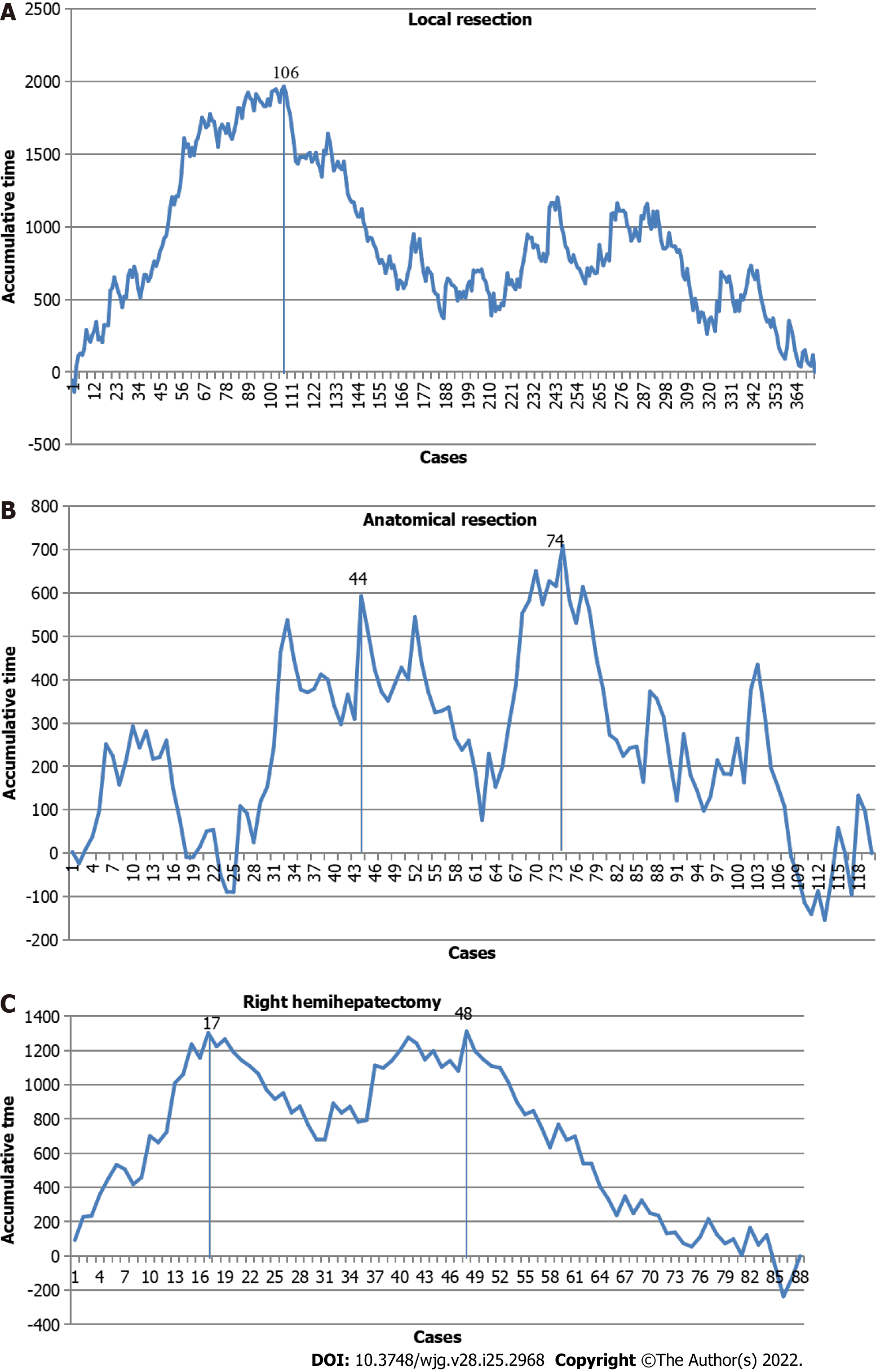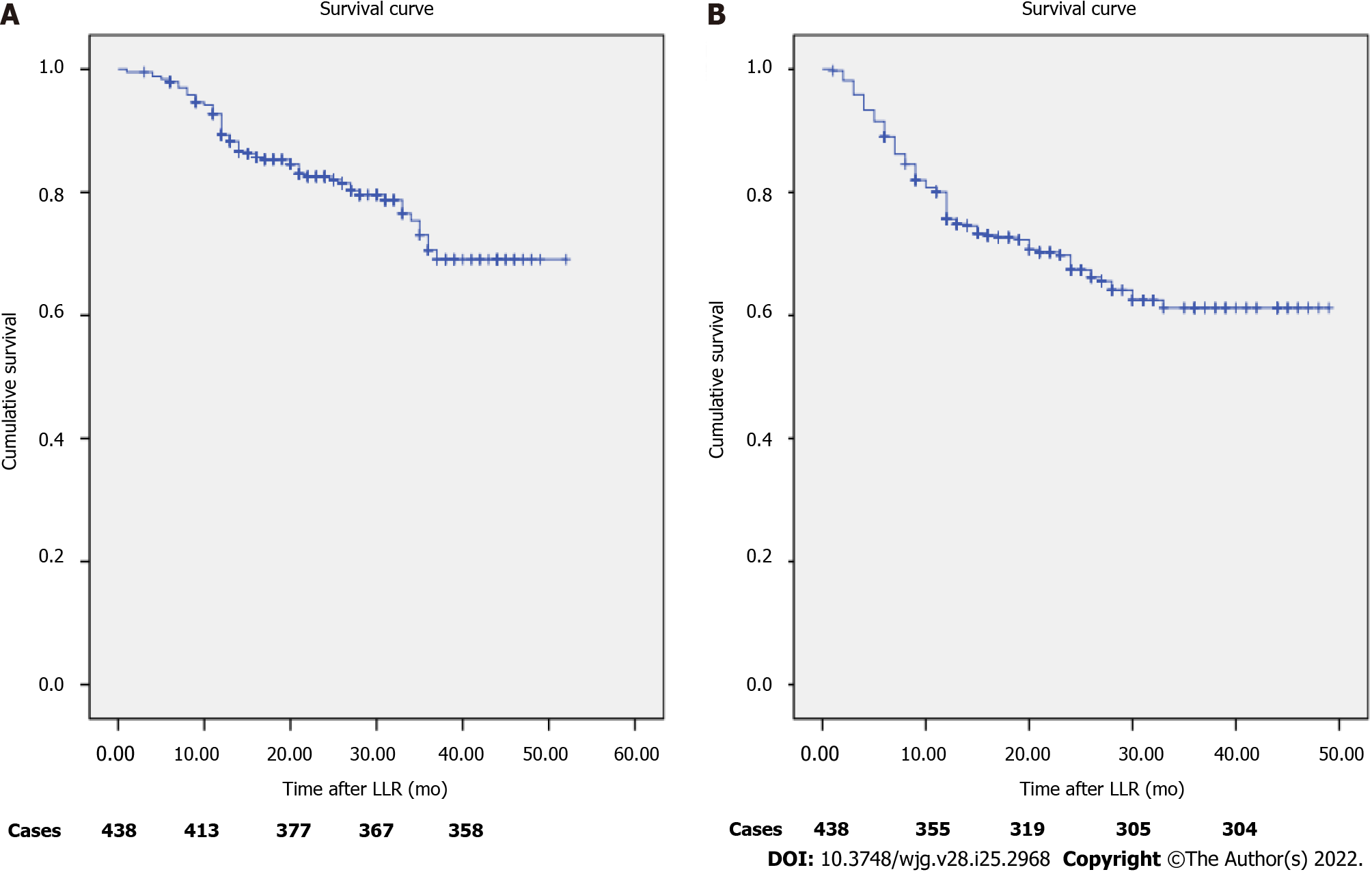Copyright
©The Author(s) 2022.
World J Gastroenterol. Jul 7, 2022; 28(25): 2968-2980
Published online Jul 7, 2022. doi: 10.3748/wjg.v28.i25.2968
Published online Jul 7, 2022. doi: 10.3748/wjg.v28.i25.2968
Figure 1 Hepatic inflow occlusion methods.
A: Trocar position; B: Extracorporeal intermittent pringle maneuver; C: Anatomical continuous hemihepatic vascular inflow occlusion (CHVIO; intro-Glissonian methods); D and E: Extra-Glissonian CHVIO.
Figure 2 The details of different types of liver resection at the center.
ALPPS: Associating liver partition and portal vein ligation for staged hepatectomy.
Figure 3 Liver function and drainage trends in the perioperative period (bP < 0.
01). A: Alanine transaminase before and after laparoscopic liver resection (LLR); B: Aspartate aminotransferase before and after LLR; C: Total bilirubin before and after LLR; D: Albumin before and after LLR; E: Drainage before and after LLR. ALT: Alanine transaminase; AST: Aspartate aminotransferase; LLR: Laparoscopic liver resection; ALB: Albumin; TBL: Total bilirubin; POD: Postoperative day.
Figure 4 The learning curves for different types of laparoscopic liver resection.
A: The learning curve for local resection; B: The learning curve for anatomical resection; C: The learning curve for right hemihepatectomy.
Figure 5 Survival rates of patients with hepatocellular carcinoma.
A: Overall survival rates; B: Disease-free survival rates. LLR: Laparoscopic liver resection.
- Citation: Lan X, Zhang HL, Zhang H, Peng YF, Liu F, Li B, Wei YG. Four-year experience with more than 1000 cases of total laparoscopic liver resection in a single center. World J Gastroenterol 2022; 28(25): 2968-2980
- URL: https://www.wjgnet.com/1007-9327/full/v28/i25/2968.htm
- DOI: https://dx.doi.org/10.3748/wjg.v28.i25.2968









